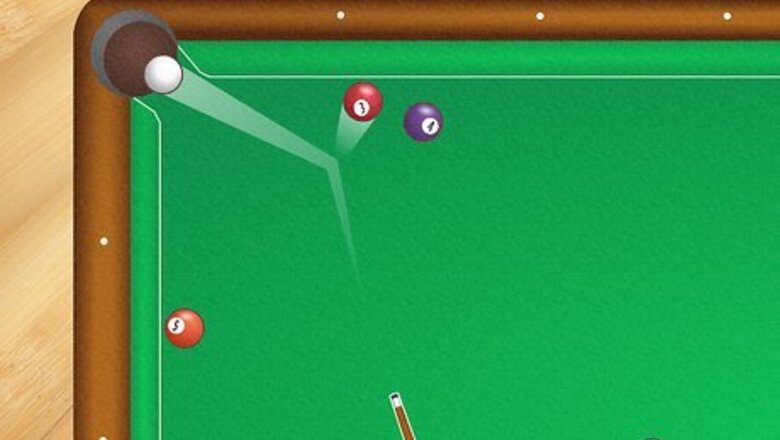
views
What are the different types of scratches in pool?

The cue ball goes in a pocket If you hit the cue ball and it falls into a pocket, it is always a scratch. It doesn’t matter what the cue ball hits first, or if it strikes anything at all. This is an example of a pocket scratch, where the cue goes into a pocket. There are also table scratches, which are scratches where the cue ball stays on the table.
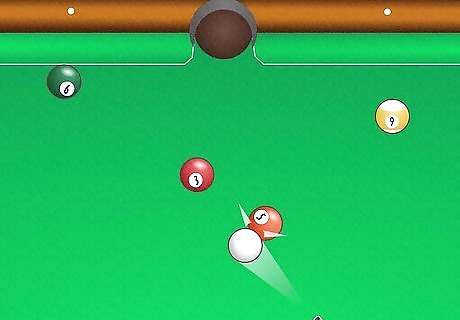
The cue ball strikes an illegal object ball An object ball refers to any ball on the table outside of the cue ball. If you hit the cue ball and the first object ball it strikes is not a legal target, it is a scratch. This is the most common kind of table scratch. In 8 ball: Illegal object balls include balls that are not your set or the 8 ball if you still have any balls remaining on the table. For example, if you’re stripes, you must hit a stripe first. Hitting the 8 ball or a solid before the cue ball strikes a legal object ball results in a scratch. In 9 ball: Any ball that is not the lowest numbered ball on the table is an illegal object ball. For example, if the 3 ball is the lowest available ball and you hit the 5 ball first, it’s a scratch.

The cue ball doesn’t hit a ball It is illegal to fail to strike an object ball. If you hit the cue ball and it doesn’t hit anything but rails, it’s a scratch. It doesn’t matter how many rails the cue ball strikes. You could whack the ball, hit rails 14 times, and it’s still a scratch if you don’t strike a legal object ball.

The cue ball leaves the table If the cue ball ends up leaving the table because you hit it funny, tried to jump a ball and failed, or hit it so hard it flew off of the rail, it’s a scratch. Notably, it is not a scratch if the ball jumps up in the air, lands on a rail, but rolls back on the table. This is a legal shot. Note: Object balls that leave the table stay down. You can just put them in any pocket. They do not count as pocketed balls though, so if you’re playing 9 ball, you hit the 1 ball, and it leaves the table, you do not continue to shoot.
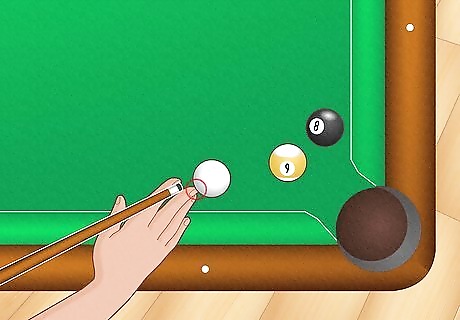
You touch, move, or manipulate the cue ball If you accidentally brush against the cue ball, tap it with your stick, or gently touch it with your tip, it’s a scratch. The cue ball cannot move legally unless you have ball in hand after a scratch, or you strike it with your cue. In most leagues, accidentally touching an object ball does not result in a scratch. In professional play, it’s a ball in hand scratch. Variation: In casual games and some amateur play, accidentally moving the cue ball isn’t a scratch. You just move the cue ball back where it was and you continue play.
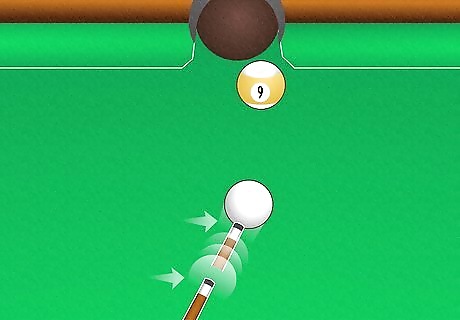
You hit the cue ball twice A double-hit occurs when a player strikes the cue ball twice on the same shot. This often happens when the cue ball and the object ball a player is shooting at are very close to one another (like within 2 inches (5.1 cm) or so). This is very hard to detect without paying close attention to how the cue ball moves and sounds when it is struck, so pay extra close attention when a player shoots a close ball. What happens with a double-hit is the cue tip hits the cue ball, the cue ball hits the object ball, and the cue tip hits the object ball a second time during the follow-through. You can find a phenomenal demonstration of how this happens in slow motion, here. A good litmus test here is how the cue ball moves. If a player shoots in the direction of an object ball that’s very close to the cue ball and both balls travel away from the cue at the same speed, it’s almost always a double hit. A cue ball cannot physically move at the same speed as an object ball it strikes without losing momentum, so if they’re both moving at the same speed it’s a big red flag. You can usually hear a double hit, too. Instead of one thicker “thumping” sound from the cue stick and a thinner “clink” from the cue hitting the object ball, you’ll hear two thicker sounds, and one or two clinking sounds.
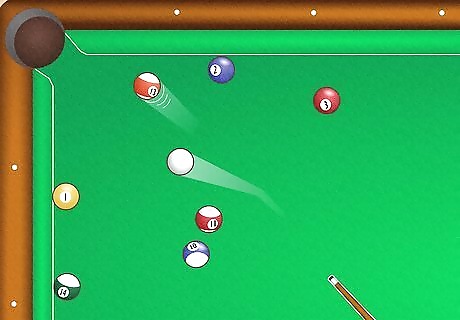
Nothing hits a railing or goes into a pocket after first contact This is probably the most obscure scratch in the game, and the most likely to spark an argument over a bar table between amateurs. It is a foul if a cue ball hits a legal object ball and neither ball hits the railing or goes in legally. Here’s a breakdown of what this looks like: A player is assigned stripes in 8 ball. They strike the 13 ball first, making legal contact because the 13 is a stripe. Once the cue ball hits that 13 ball, it is a legal hit if—and only if: The cue ball goes on to hit a rail. The 13 ball goes on to hit a rail. The 13 ball goes into a pocket. Either the cue ball or 13 ball strikes another object ball that hits a rail or goes in. If the cue ball hits the 13 ball and nothing goes in or hits a rail, it’s a scratch.
Consequences of Scratches
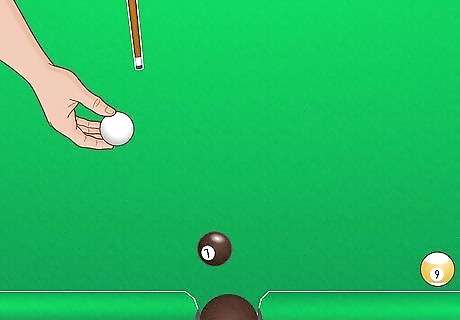
In 8 and 9 ball, a scratch results in ball in hand. “Ball in hand” is a common phrase in competitive and amateur pool. It means that the opposing player can put the ball anywhere they want on the table. The player who scratches leaves the table, and their opponent may pick the cue ball up and put it anywhere they want. This is a big deal. Ball in hand allows a player to put the cue ball anywhere, which means they can pocket their toughest ball, set themselves up for an easy run out (make all of the balls), or play an easy defensive shot to set themselves up for a better turn later.
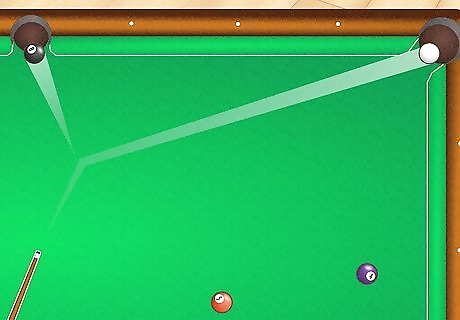
Pocket scratches on a pocketed 8 ball result in a loss of the game. In 8 ball, if you make all of the balls in your set (all the stripes or all the solids), you move on to the 8 ball. If you sink the 8 ball but also pocket the cue ball or the cue ball leaves the table, you lose the game. Popular variation: In most popular amateur leagues, like APA, TAP, and BCA, pocketing the cue ball when you’re on the 8 ball is a loss of game.
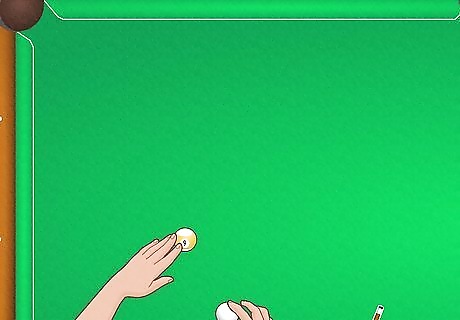
Pocket scratches on a pocketed 9 ball result in a spotted 9 ball. In 9 ball, if you make the 1-8 balls and then sink the 9 ball or you hit the lowest available ball on the table which goes on to knock the 9 ball in, you win. However, if you pocket the 9 ball legally and then the cue ball goes into a pocket or leaves the table, the 9 ball is “spotted,” which means it is removed from the pocket and placed back on the table at the headspot. The other player then gets ball in hand. If the 9 ball is the last ball on the table when this occurs, the opposing player still gets to put the cue ball anywhere. This almost always leads to a loss of game.
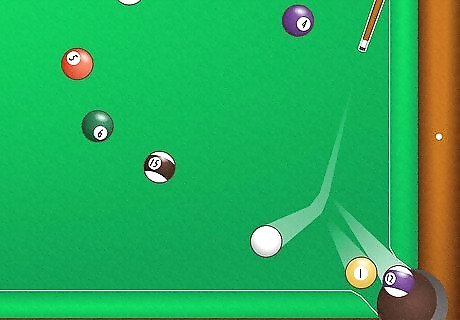
Pocketed balls on a scratch stay pocketed. With the sole exception of the 9 ball in games of 9 ball, any ball that is pocketed in the process of a scratch remains in its pocket. You never put object balls or the 8 ball back on the table.
How to Avoid Scratches
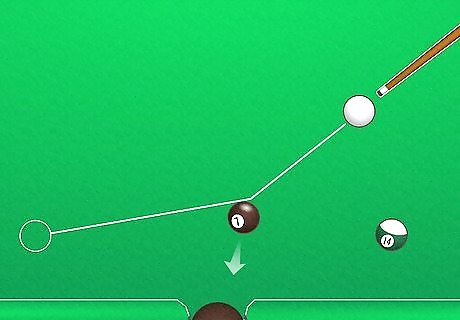
Use the tangent line to determine where the cue ball will go. The tangent line refers to the imaginary perpendicular line that forms at the contact point where the cue ball strikes an object ball. If you hit the cue ball in the center and don’t put any spin on the ball, the cue ball will always travel along that tangent line. Use this universal rule to help avoid driving the cue ball into a pocket. To picture this, put an object ball on the headspot and the cue ball in the center of the headstring. Now, but a second object ball behind the object ball on the headspot at the exact point where you’d need to hit the first object ball to sink it. Hold your cue in between those two object balls. That’s where your cue ball will travel!

Add draw or follow to your shot to avoid obvious scratches. If you hit the bottom half of the cue ball, you’ll impart draw on the ball, which causes the cue ball to spin backwards after striking the object ball. If you hit the top of the cue ball, you’ll impart follow on the ball and cause it to roll forward after striking the cue ball. Use draw or follow to avoid scratching when the tangent line is pointing the cue ball directly to a pocket. So, if you know you’re going to scratch, you can put draw on the cue ball to miss the pocket on the shorter side, or follow on the cue ball to miss the pocket on the longer side. If you hit the left or right side of the ball, you’re imparting English on the ball. English does not influence the path of a ball on a tangent line. It only influences how the cue ball moves after it hits a rail, which is when the English “catches.”

Cheat the pocket if the object ball is super close to the pocket. People often scratch when the object ball is just barely outside of the pocket. They hit the ball and the cue ball follows it right in. To avoid this, try cheating the pocket. To do this, hit the object ball at a 30-degree angle to the pocket instead of hitting it right on. This way, the object ball will shoot into the side of the pocket, and the cue ball will hit a railing. Cheating the pocket is possible because the pockets are bigger than the balls. This means that you don’t have to hit the center of the pocket to successfully pocket a ball.

Hit the cue ball at a reasonable speed. A lot of new players hit the ball much harder than they need to. This isn’t bad in a vacuum, but harder shots mean that the cue ball is going to travel farther than it would if you hit a little softer. That increases the odds that the cue ball hits something and gets knocked into a pocket. If you keep losing the cue ball, try hitting slower. You’d be surprised how slow you can hit the ball to still get good action on the shot. Set the cue ball down at the headspot and put an object ball in front of a pocket at the other end of the table. Then, try shooting as slowly you can to sink the ball. Notice how slowly you can hit the cue and still sink the ball!
Common Misconceptions about Scratches
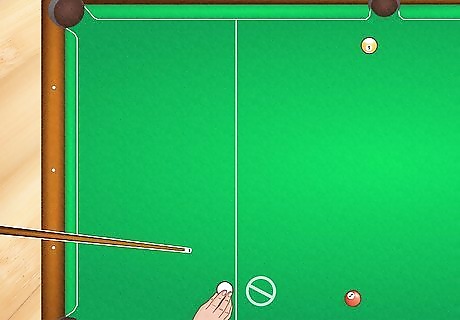
You must put the cue ball on a specific part of the table after a scratch. With the sole exceptions of a scratch on the break in the APA 8 ball league or UPA professional play, and all scratches in one pocket, you never place the cue ball behind any line. Some bar players will say scratches must be shot from behind the headstring (the horizontal line at the base of the table where you break from), or from the side opposite of the scratch. The American Poolplayers Association (APA) and United States Professional Poolplayers Association (UPA) require players to scratch from behind the headstring but only if a player scratches on the break.

The 3-bank rule allows you to not hit any balls without scratching. The 3-bank, 3-rail, or 3-wall rule is a fictional rule that is often implemented in bars where the players don’t know any better. It goes like this: if you shoot the cue ball and it hits 3 different rails but otherwise touches nothing, it’s not a scratch. There are no pool formats where this is true. You always have to hit a legal object ball and then pocket that ball or have something hit a rail for it to be legal.

You need to sink the 8 ball in a specific pocket or particular way. A lot of casual bar players have rules about where a player is allowed to pocket the 8 ball. The most popular variation is “you must pocket the 8 ball in the same pocket where you sank your last object ball.” This is closely followed by “you have to bank the 8 ball.” None of these requirements are used by any billiards association or tournament director. None of this is true unless you and the other player casually agree to it ahead of time. It’s not an official rule, though. You can pocket the 8 ball anywhere you want so long as you call the pocket and make the ball legally.
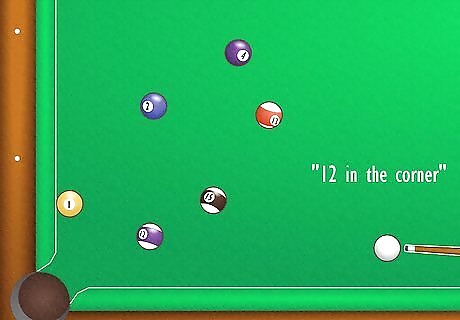
Failing to call a shot results in a scratch. In 8 ball, you are expected to call your shots whenever it is not obvious what you’re shooting at (you’d say “12 in the corner” or “5 ball in the side,” for example). If a player fails to call a shot, it is never a scratch. Some players are mistaken that this is a scratch, and while it is a foul, the opposing player doesn’t get ball in hand. Just FYI, unless you’re playing in a professional tournament, you do not need to call any shots in 9 ball. It is what is known as a “slop” game.

You can “scoop” the cue ball to jump it. It is illegal to jump the cue ball off of the table by shooting at the bottom of the cue ball and sliding the stick between the felt and the ball. The only legal way to jump is to strike the top of the cue ball at a downward angle. Scooping the cue ball is always a ball in hand scratch.
Unique Scratch Rules in One Pocket Pool
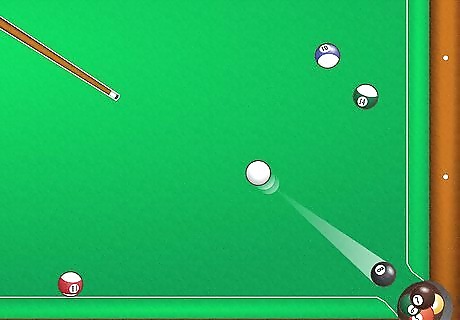
The object of one pocket is to be the first player to pocket 8 balls in your assigned pocket at the bottom of the table. Normal rules about scratching that involve first contact and the cue ball going into the pocket apply, but there are a few unique elements: There is no ball in hand. The ball is always played where it is for table scratches, and played anywhere behind the headstring for pocket scratches. When a player scratches, the fouling player “owes a ball” and subtracts 1 point from their score. If a player owes a ball, the next time that player pockets a ball legally, they remove it from the pocket and place it as close as possible to the headspot, working vertically towards the bottom rail. They are awarded no points for that ball, but they continue shooting. Spotted balls are always placed on or along the headspot at the end of the shooting players turn.
Unique Scratch Rules in Straight Pool (14.1)

The object of straight pool (aka 14.1) is to be the first player to sink a predetermined number of balls (usually 50 or 100). When one ball is left on the table, the remaining balls are re-racked with the headspot empty and play continues. All standard rules about the cue ball going into a pocket and not hitting a rail after first contact apply. However, there are a few specific rules for scratching in straight pool: There is no ball in hand. Table scratches are always played where the cue ball is, and pocket scratches are always played behind the headstring. When a player scratches the first time, they lose 1 point from their score. If a player scratches two times in a row, they lose 2 points from their score. If a player scratches three times in a row, they lose an additional 15 points. Their opponent now has the choice of leaving the balls where they are and continuing to shoot, or re-racking all 15 balls and forcing the player who scratched three times to break.
Key Takeaways
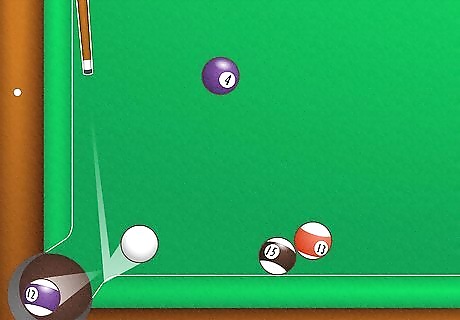
Avoiding scratches is essential to winning in pool. Regardless of the game or format, a scratch can be catastrophic if you’re playing someone who can shoot well. It gives your opponent the opportunity to shoot at any ball they want, which increases the odds you either fall behind or lose right away. Keeping the ball on the table and avoiding table scratches is important if you want to win. If you miss a legal shot, your opponent isn’t going to have a good shoot available to them a lot of the time. They’ll always have a good shot if you give them ball in hand, though.
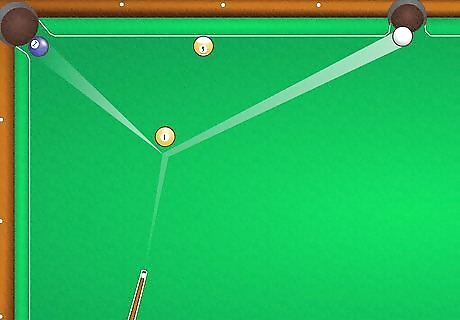
Pocketing the cue and hitting the wrong ball are the most common scratches. In the vast majority of matches (unless pros are playing), someone is very likely to scratch at some point. The table isn’t that big, and it’s easy to lose the cue ball and have it bounce randomly into a pocket. At the same time, it’s common for the cue ball to get trapped and require someone to kick at a ball and miss, hitting the wrong object ball in the process. A kick refers to a shot where you have to shoot around an illegal ball to try and hit your target, so you shoot the cue ball into a railing first to bounce into it.
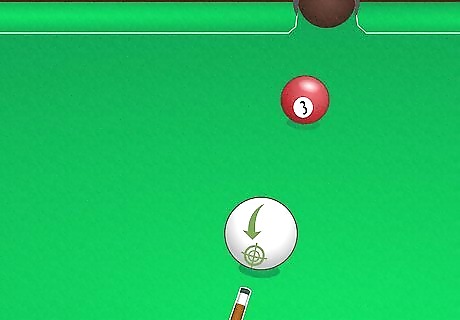
Change the way you shoot to minimize the odds you scratch. Take what you know about the tangent line to look at the path the cue ball is going to take before every single shot. If you suspect that the cue ball might be in danger, hit the bottom or top of the cue ball to adjust the path it’ll take after you make contact. If you find yourself losing track of the cue ball, it’s a big sign you’re probably hitting too hard! Slow down. The ball doesn’t need that much juice to get where it needs to go.













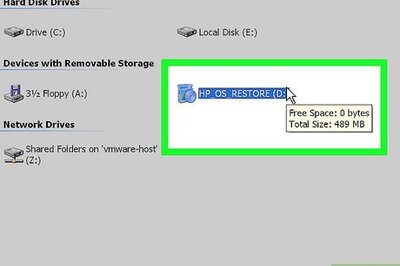
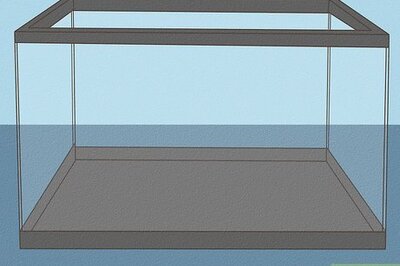

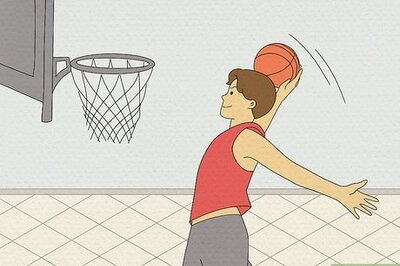



Comments
0 comment